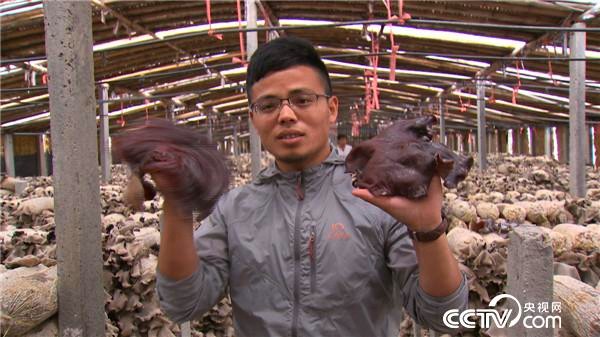The cultivation of traditional Chinese medicine opens up a new way to get rich
Gastrodia elata
Gastrodia elata (Gastrodia elata) is an orchid and perennial herb, and its growth and development has specific environmental conditions and material basis. Armillaria mellea must be used as "food" for growth and development. If there is no Armillaria mellea to provide "nutrition", the Gastrodia elata corm will shrink due to hunger and die within 2-3 years. Therefore, the prerequisite for artificial cultivation of Gastrodia elata is to cultivate the strains and materials of Armillaria mellea.
Gastrodia elata planting conditions indoor free space, balcony, basement and courtyard, under the forest, grape trellis and all kinds of flowers and trees can be planted. Gastrodia elata planting covers a small area: according to materials, boxes can be large, can be small, multi-layer three-dimensional planting. And easy to manage, a labor force can manage more than 2000 cases or more. In addition, the asexual reproduction planting method used in the traditional Gastrodia elata production has the problem of decreasing yield and quality year by year. From a long-term point of view, the use of sexual hybrids should be promoted in order to obtain ideal planting income.
Gastrodia elata does not need light conditions, only suitable temperature, humidity and other environment, a variety of cultivation forms, urban, rural, indoor, outdoor ground and underground can be planted.
Codonopsis pilosula
Codonopsis pilosula is a perennial herb of Platycodon grandiflorum family. It has the effect of tonifying qi, invigorating qi and relieving cough. It is known as small ginseng in the folk. It is a large amount of medicinal materials in the national market of traditional Chinese medicine and is exported all the year round. The annual demand of Codonopsis pilosula is large, and the production is reduced due to the small planting area and drought in the producing areas in previous years. At the same time, the market inventory is empty and the supply of goods is in short supply, which makes the price continue to rise.
Codonopsis pilosula prefers cool and humid conditions to loose soil conditions. The seedlings of Codonopsis pilosula can elongate 30 cm a day in the peak growing season, so pay attention to the control of paclobutrazol. If it is too late to apply medicine, cut off a large part of the vine on a sunny morning to facilitate root growth. Be careful not to store water in the field during the rainy season. Storing water for too long will damage the rhizome and reduce the quality and yield.
Codonopsis pilosula is planted before freezing or in spring, because the seeds are very small, so they should be leveled and raked, sowed, covered and watered with a big hoe because the seeds are very small. If you mix the seeds with wet sand before planting and put them for a few days, the seedlings will emerge earlier and neatly. Codonopsis pilosula was harvested for one or two years, with 1.5-2 kg of seeds per mu, and there were basically no diseases and insect pests in the growth process. After the autumn of the same year or the next autumn, when the leaves were withered and yellow, the aboveground parts were cut off, and then the roots were dug, dried and bundled into small handfuls for sale.
Scutellaria baicalensis
Scutellaria baicalensis Georgi is a perennial herb of Labiatae, medicinal rhizome, is a commonly used large variety of Chinese herbal medicine, has the effect of clearing heat and dryness, calming the fetus and cooling blood, alias golden tea, used to make tea, has the function of cool fire, anti-inflammation and summer heat. Scutellaria baicalensis Georgi is distributed all over China. With the gradual decrease in the supply of wild Scutellaria baicalensis and the continuous rise in the price of wild goods for several years, the domestic species of Scutellaria baicalensis has become very popular in the market.
Scutellaria baicalensis Georgi is planted in plain area, it is better to choose sandy or semi-sandy soil, it is necessary to have corresponding water conservancy conditions, apply sufficient bottom fertilizer, and make beds after deep ploughing, no matter winter sowing, spring sowing or summer sowing, the seed per mu is about 2 kg. Planting with flat beds and wide strips is like planting cabbages, but it is much easier than planting cabbages. Watering after sowing can be postponed on rainy days. As long as the seedlings come out, they will not die of drought and have a strong endurance. Scutellaria baicalensis Georgi has strong adaptability and is not afraid of cold and drought. Barren hills, forests and fields can all grow. In some places, the seeds of Scutellaria baicalensis Georgi were sown on the beach, while in some places, the seeds of Scutellaria baicalensis Georgi were sown on the hillside. Seeing the benefits, we should learn from others. Dry areas should be planted in the rainy season, use more seeds of Scutellaria baicalensis, the success rate is very high.
Shang Fujing
Related
- A course of planting techniques and methods on how to grow carrots
- How to plant the latest tulips?
- Is it better to pick tea in the morning or in the afternoon? When is the best time for tea to be picked? what is the third or fifth tea?
- Launch Yuanxiao Happy combination Haocha + Tea Yuan healthy Taste
- Penghu Tourism "Fireworks 20 Parade with You"
- 2022 West Lake Happiness holds "Digital Revitalization Voucher" and draws iphone13 and laptop.
- Banqiao Fuzhou social houses are designed to change start-up combined with police elimination to create a safe and livable environment
- The convenient measure of "mechanical weeding" in Xinbei has been abused and the Agriculture Bureau has imposed heavy penalties on the illegal land consolidation.
- Changgeng University Joins Hands with Four Memory Factories to Rescue Memory Talent Shortage
- The list of Taiwan's top 100 MVP managers is listed by the Director-General of the Farmers' Association of Sanxia District.



